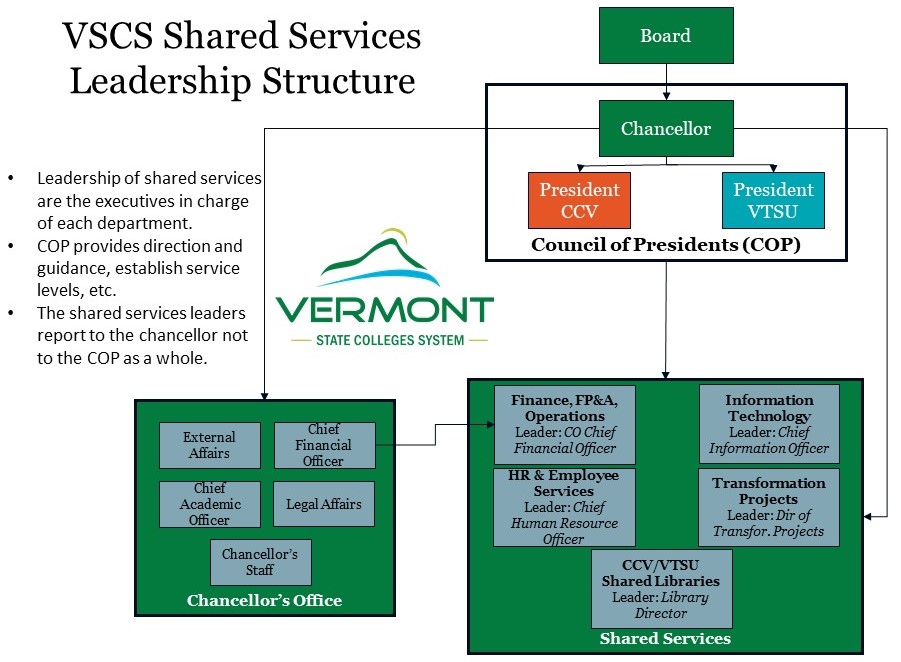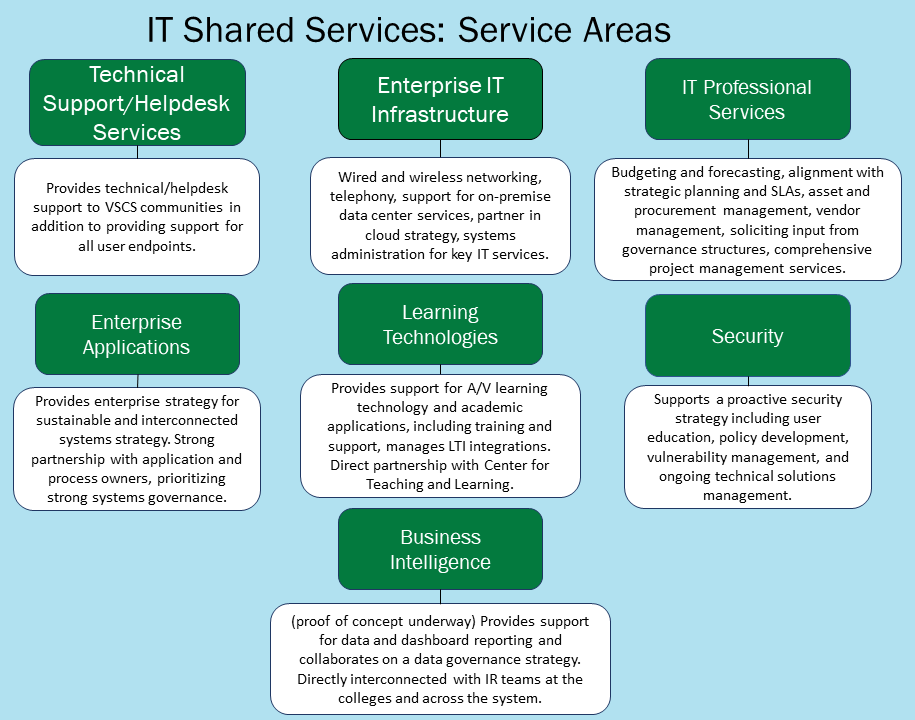We are pleased to share an update on the following job appointments for the IT Shared Services team:
- Sarah Chambers will be Director of Learning Technologies
- Erik Lightbody will be Manager of Helpdesk Services
- Steve Bohnyak will be Manager of Endpoint Systems
- Tony Harris will be Manager of Academic Systems/Support
We are excited to share a brief FAQ with you with the common questions we are getting to date. If you have a question that isn’t answered here, please feel free to reach out to Chief Information Officer Kellie Campbell (kcampbell@vsc.edu).
Why are we moving to a shared services model?
A shared service organization is a way of providing administrative and technical services across multiple institutions or units in a way that optimizes quality, consistency, and efficiency. It allows the institutions to focus on their primary mission while still receiving the administrative help they need. You can find a full description of how Shared Services will work in the Vermont State Colleges System on the Transformation Website.
Does this mean all IT staff are now working for the Chancellor’s Office?
The short answer is no. A shared service is not the same as consolidating all these functions in a central office with central control. Shared service organizations are distinct and are organized to deliver services individually and collectively to the institutions and operating units. Shared services will have a new reporting structure that will receive direction and guidance from the Council of Presents (COP). Full details can be seen on the following chart:

Are IT staff members on my campus going away?
The answer is also no. IT staff will remain embedded into communities and on campuses. In fact, most want to stay right where they are. What it does mean is that IT staff will have a shift in the scope of their work, with greater collaboration between all IT folks across the system, thereby providing improved support. Staff members will have better support and resources, as well as being able to improve their specialized skills, instead of wearing many hats. Not only will this improve service, but it is intended to improve work satisfaction and limit burnout.
If I have an issue, will there be IT leadership on my campus?
IT Shared Services will have a Campus Liaison assigned to each campus and learning site around the state. This individual will be an accountable leader responsible for issue escalation as matters arise.
Will there be any change to the way I receive support?
As the IT teams are coming together, we are seeking to redesign our support processes – like many others! We wish to provide more easily accessible access to assistance for all members of the Vermont State Colleges community. Towards this end, we are crafting a clear service catalog and communication channels so you will be able to view our new support structures. Please keep an eye out for additional communication as we begin to launch this model. We will also have specific areas of support, which you can see depicted below:

